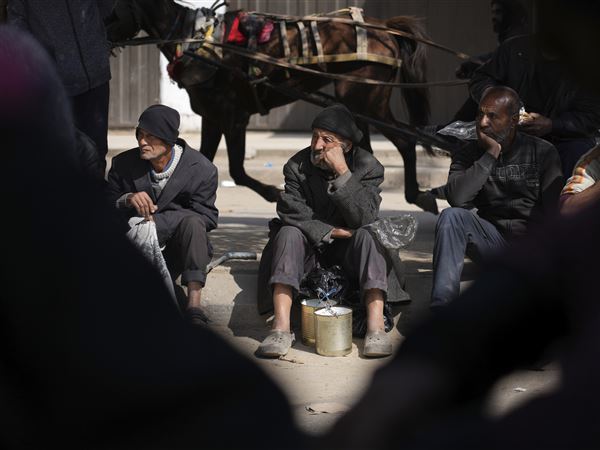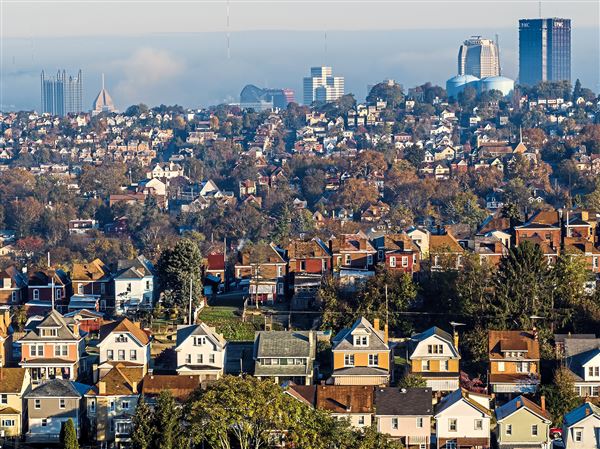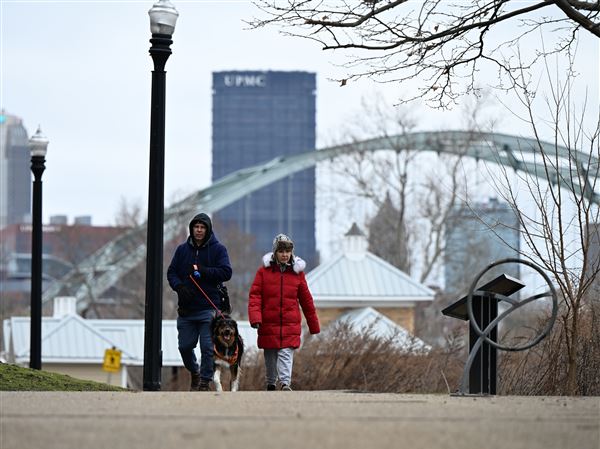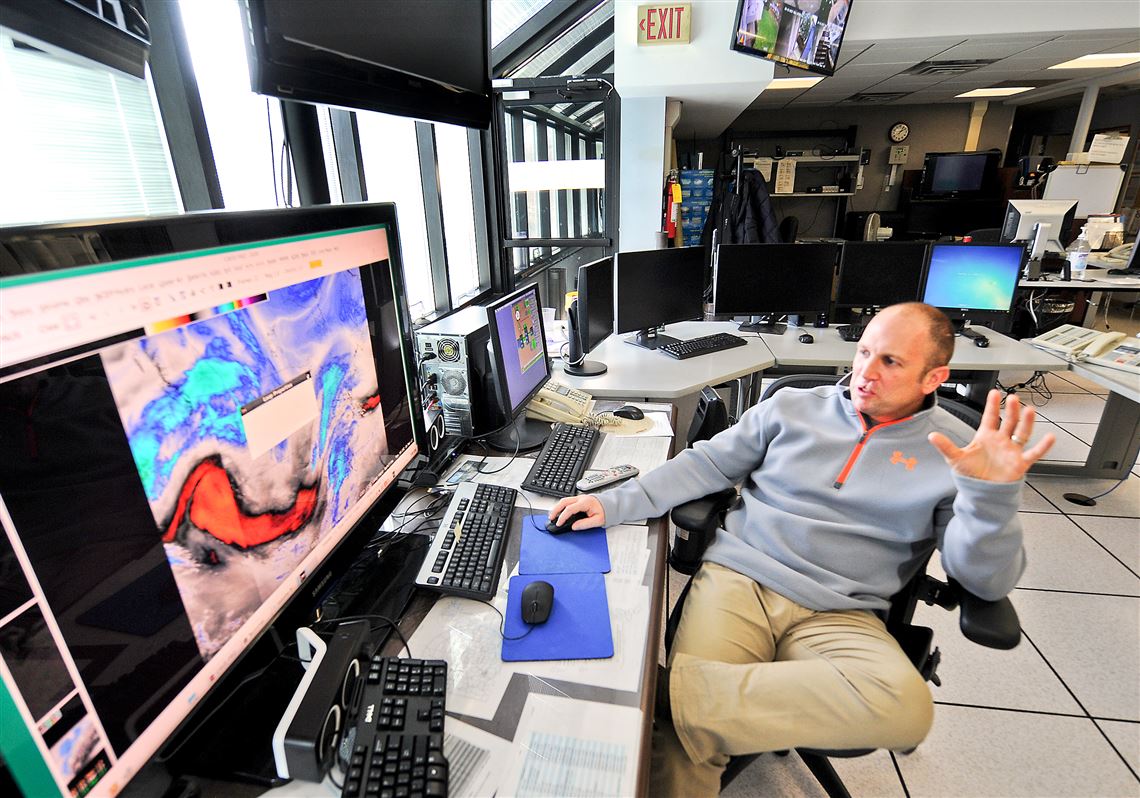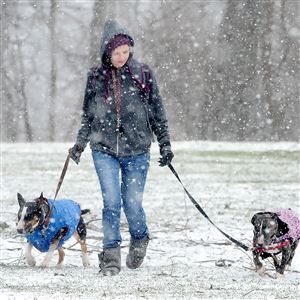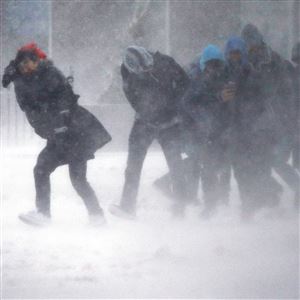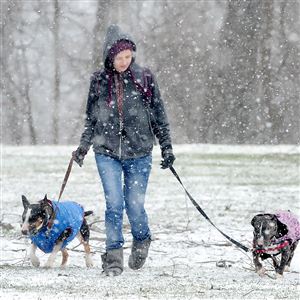Despite the Doppler radar, the satellite mapping technology, the 15 automated data collectors at regional airports, the 100 data collectors in backyards and the predictive weather models that use algorithms to come up with the most accurate forecast possible, Fred McMullen knows some people still are going to be upset Tuesday with the forecast of the snowstorm heading our way.
“People’s brains only remember the biggest number,” Mr. McMullen, the warning coordination meteorologist at the National Weather Service Pittsburgh, said Monday in his office in Moon.
“They might hear a bunch of different forecasts about the storm — 1 to 2 inches, or 4 to 6 inches, or 12 inches — but the one they’ll remember is the 12 inches, and if it isn’t that much they’ll go on Facebook or somewhere and make a comment and say, ‘They were wrong!’” he said. “You’ve got to have thick skin in this business.”
That is true for all 10 meteorologists at the weather service’s Pittsburgh station — one of 122 stations nationwide — who have been working 24/7 on the coming storm for days to refine predictions.
Mr. McMullen handles many of the meetings with state and local officials in this region, which includes Western Pennsylvania, eastern Ohio, northern West Virginia and western Maryland.
There was a 2:30 p.m. call Monday with Westmoreland County officials, wondering what the changing forecast — the projection of 4 to 8 inches dropped to 2 to 4 inches — meant for them.
At 4 p.m. he would talk with school superintendents in West Virginia, followed by a call with Maryland state and local emergency management officials.
And all of that came after three conference calls in the morning with other officials, including from Pennsylvania, all wanting to know what he could add to what they were reading about what may turn out to be the biggest storm of the 2016-17 winter.
“They want to know how it’s going to affect their residents, how it’s going to affect the commute, so people can get safely where they’re going,” he said.
A decade ago, though, “We’d get a ton of calls from residents wanting to know what’s happening. We don’t get that anymore because people have so many sources of news to get their weather information.”
Of course, the projection that this could be the biggest storm this winter is not saying much.
The 2 to 4 inches the Pittsburgh area is projected to get — nowhere near the 12 to 18 inches predicted for New York and Boston — through Tuesday won’t bring the region anywhere near its normal amount of snow.
Since Oct. 1, Pittsburgh has had only 26.5 inches of snow, nearly 30 percent less than the 36.9 inches we normally get each winter. The biggest storm so far left 3.2 inches.
In fact, this winter so far has been the 10th-warmest since the weather service started keeping track in 1871.
That factor will be largely forgotten by Tuesday night, when high winds could push the windchill down to zero in parts of the region.
The cold was perhaps a bigger concern than the accumulation, because the combination could mean icy roadways.
Mike Gable, Pittsburgh public works director, said the city planned to have 60 snowplows on the streets Monday night and 90 on Tuesday.
City crews treated some roads in advance, and they will be out again Tuesday and Wednesday nights in anticipation of the dropping temperatures.
“We’re preparing for the worst and hoping for the best,” he said.
When the weather service knows a storm is coming, the work is divvied up by the type of forecast, and different meteorologists handle separate pieces.
[Heading out? Check the city’s Snow Plow Tracker to see which streets have been cleared]
Meteorologist Rihan Gangat, for example, was working out the weeklong forecast, while a colleague, Alicia Miller, who sits behind him, worked on the more immediate forecast of how much and where the storm would produce snow and other precipitation in the region.
They’d already changed the forecast significantly. They cut the predicted amount of snow roughly in half, largely because of data about how the storm had behaved so far, and where it was tracking.
“Those are pieces of the puzzle,” Mr. McMullen said. “And when you have a couple more pieces of the puzzle set, it’s easier to solve.
“There are just many, many pieces, and weather is complicated.”
Sean D. Hamill: shamill@post-gazette.com or 412-263-2579 or Twitter: @SeanDHamill. Staff writer Liz Behrman contributed.
First Published: March 14, 2017, 2:39 a.m.

